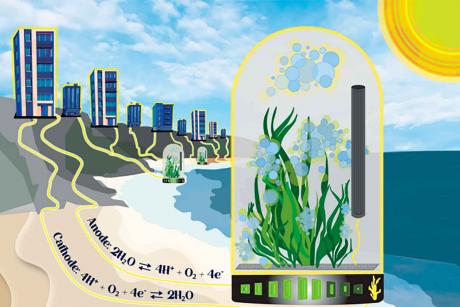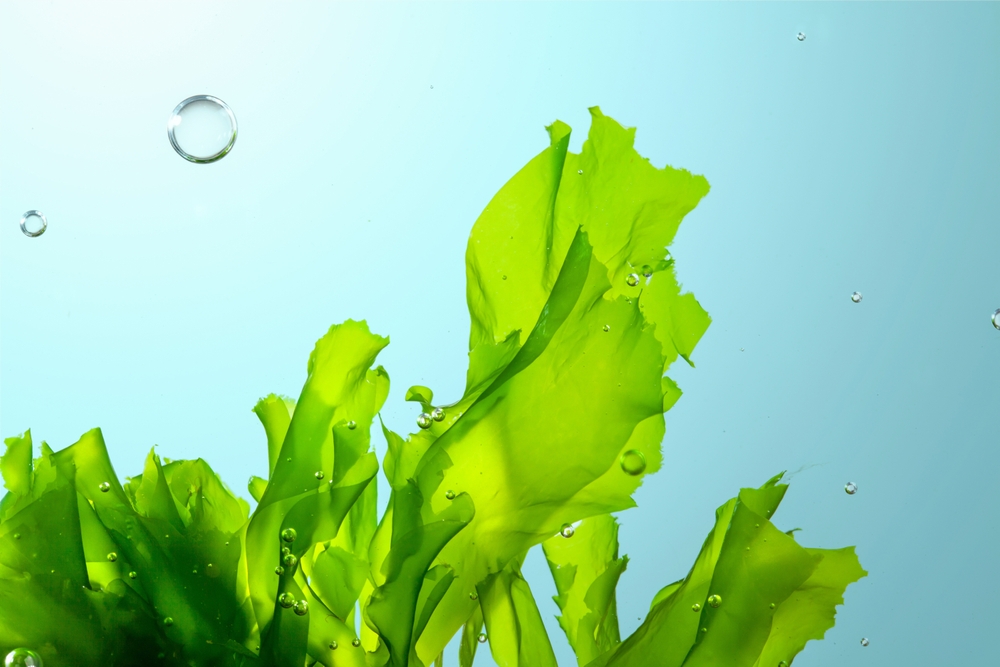Inspenet, June 10, 2023
The study carried out by scientists from the Faculty of Chemistry and Biology of the University of Santiago de Chile was covered in the high-impact international journal of the Royal Society of Chemistry.
“For the first time, a macroalgae has been used for the development of bio-photopanels that can give way to the emergence of environmentally sustainable technologies” explained the Biotechnology Engineer, Sergio Choque and Dr. Tasca.
Observing the processes that exist in nature as a source of inspiration to find environmentally sustainable alternatives in the generation of electrical energy was what pushed the researchers from the Faculty of Chemistry and Biology to find an innovative solution that involves the Ulva linza macroalgae.

Breaking barriers! Scientists use macroalgae to generate electricity
This is the study carried out at the Catalysis and Bioelectrocatalysis Laboratory of the University of Santiago de Chile , directed by Dr. Federico Tasca, who investigated how to develop an electrical circuit without affecting the life cycle of the species in question.
“For the first time, a macroalgae has been used for the development of bio-photopanels that can give way to the emergence of environmentally sustainable technologies” explained the Biotechnology Engineer, Sergio Choque and Dr. Tasca himself.
“We found that certain molecules called “redox mediators” or benzoquinones are crucial in the electron transfer process,” added Dr. César Zúñiga Loyola, a postdoctoral researcher at the laboratory, thus referring to the natural process of photosynthesis in algae. that involves the transport of electrons and, therefore, the transformation of energy.

Scientific advances: The electricity generated by the macroalgae is 2,000 times greater
“For this reason, we studied how the presence of different concentrations could increase the production of electric current in these macroalgae immobilized on electrodes. The results we obtained showed to be very promising, indicating that the electricity generated by the macroalga studied in the presence of light and mediators was 2,000 times greater than without the presence of mediators”, he explained.
These characteristics, the researchers explained, would allow the creation of bio-photopanels in the future, having this species as a central element in electricity production and as part of a constant electricity supply circuit.
The publication, which was on the cover of the prestigious Journal of Material Chemistry A (IF: 14,511), shares credits with a multidisciplinary team made up of Dr. Alejandra Moenne and Dr. Alberto González, both researchers from the Marine Biotechnology Laboratory of the Faculty of Chemistry and Biology; the engineer Sergio Choque; the dr. Riccarda Antiochia and Dr. Lo Gorton; the latter is considered a world reference in the field of bioelectrochemistry.
“The cover is a good sign for our research group and tells us that we are advancing on topics that are relevant to society and with results that can be considered as a contribution. The proposal has been considered innovative and visionary since this is the first work in which a macroalgae is used for this purpose”, highlighted the academic team.
Source and internal photo : https://usach.cl/news/innovadora-investigacion-la-usach-propone-primera-vez-uso-macroalga-para-la-generacion
Cover photo : ShutterStock
Don’t miss the Inspenet News at: https://inspenet.com/en/inspenet-tv/

